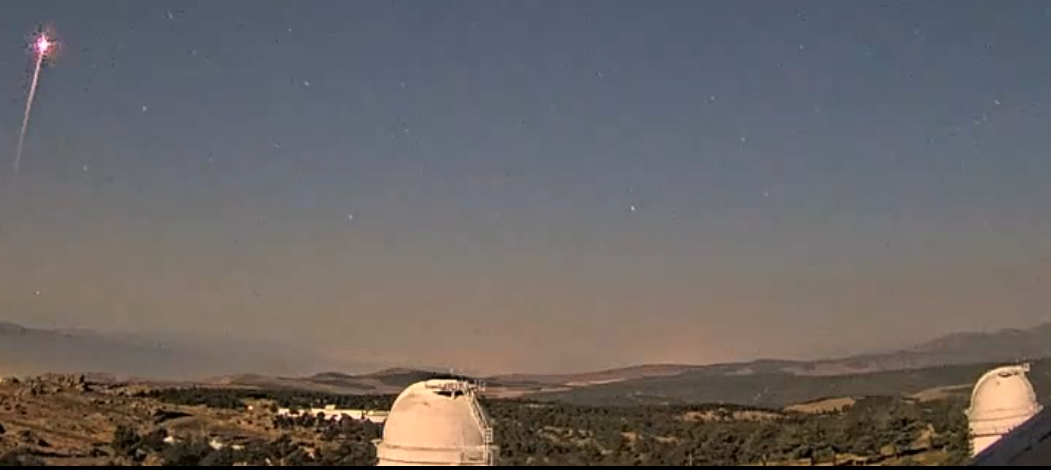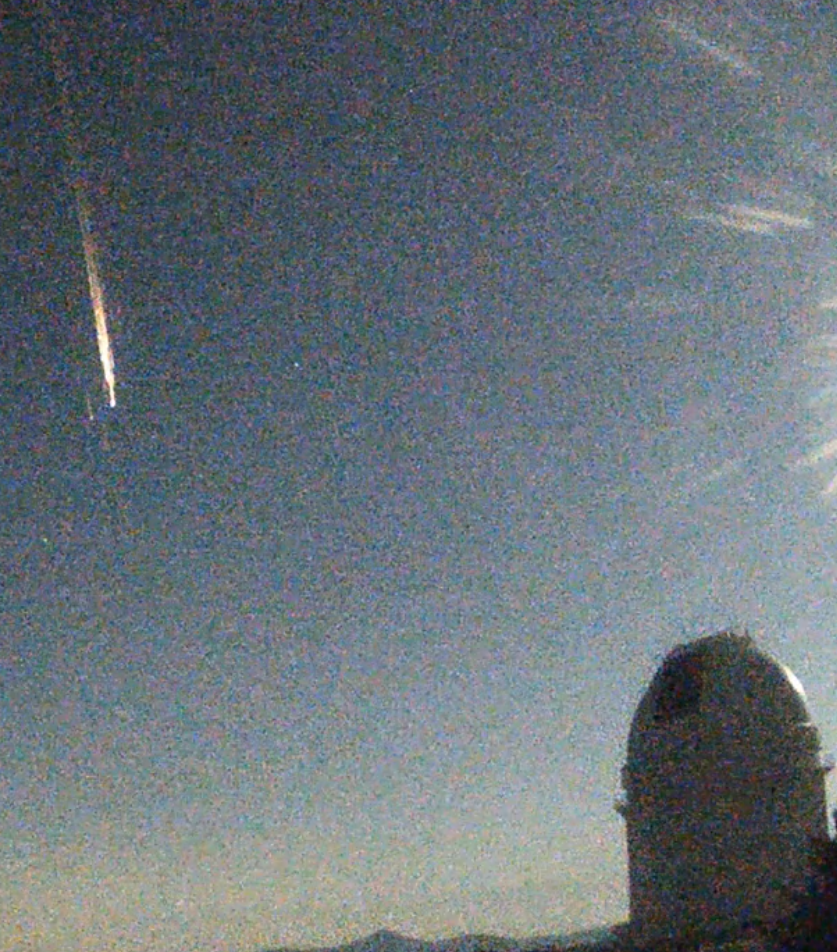
On the night of August 10, numerous eyewitnesses observed the disintegration of an object as it entered the Earth's atmosphere. Although initial analyses suggested it was the fourth stage of the Chinese Jielong-3 rocket, further analysis revealed it to be Starlink 30199.
 This artificial fireball was registered with the SMART Project's detector operated at Calar Alto (Almería), La Hita (Toledo), Sierra Nevada (Granada), Otura (Granada), Huelva and Sevilla observatories.
This artificial fireball was registered with the SMART Project's detector operated at Calar Alto (Almería), La Hita (Toledo), Sierra Nevada (Granada), Otura (Granada), Huelva and Sevilla observatories.
At Calar Alto Observatory in Almería, several of its external cameras, also recorded this event.
Professor José María Madiedo (Instituto de Astrofísica de Andalucía IAA-CSIC), PI of the SMART Project, was responsible for analyzing the event. The preliminary analysis, pointed that the phenomenon occurred as a result of re-entry into Earth's atmosphere of the fourth stage of China's Jielong-3 rocket. Even early analyses by renowned astrophysicist Jonathan McDowell of the Harvard-Smithsonian Center, also pointed to that stage of Jielong-3. This rocket was launched only two days ago, on August 8. However, further analyses concluded that the event was finally produced by Starlink 30199.
The object entered our atmosphere at a speed of 29,000 km/h. The friction with the air at such an enormous velocity caused it to break apart into multiple fragments that became incandescent. In some of the videos, a clear flare can even be seen. This produced a fireball which, in this case, was artificial, starting at an altitude of about 118 km over the Atlantic Ocean. The fireball traveled northeast, passing over Andalusia, Murcia, and the southern part of Alicante on its way toward the Balearic Islands. In total, it covered around 900 km before completely disintegrating.
Below are the accelerated videos that were registered with the external cameras operated at Calar Alto Observatory in Almería.
Calar Alto (CAHA) fireball detection station, together with the one at the Observatory of Sierra Nevada (IAA-CSIC) and others placed at different locations in Spain, are part of the S.M.A.R.T. project led by Professor José María Madiedo (IAA) to track that kind of objects. Specifically, Calar Alto (CAHA) station and the one at Sierra Nevada (IAA-CSIC) constitute a collaboration agreement between the IAA researcher José María Madiedo and both institutions.
 English (UK)
English (UK)
